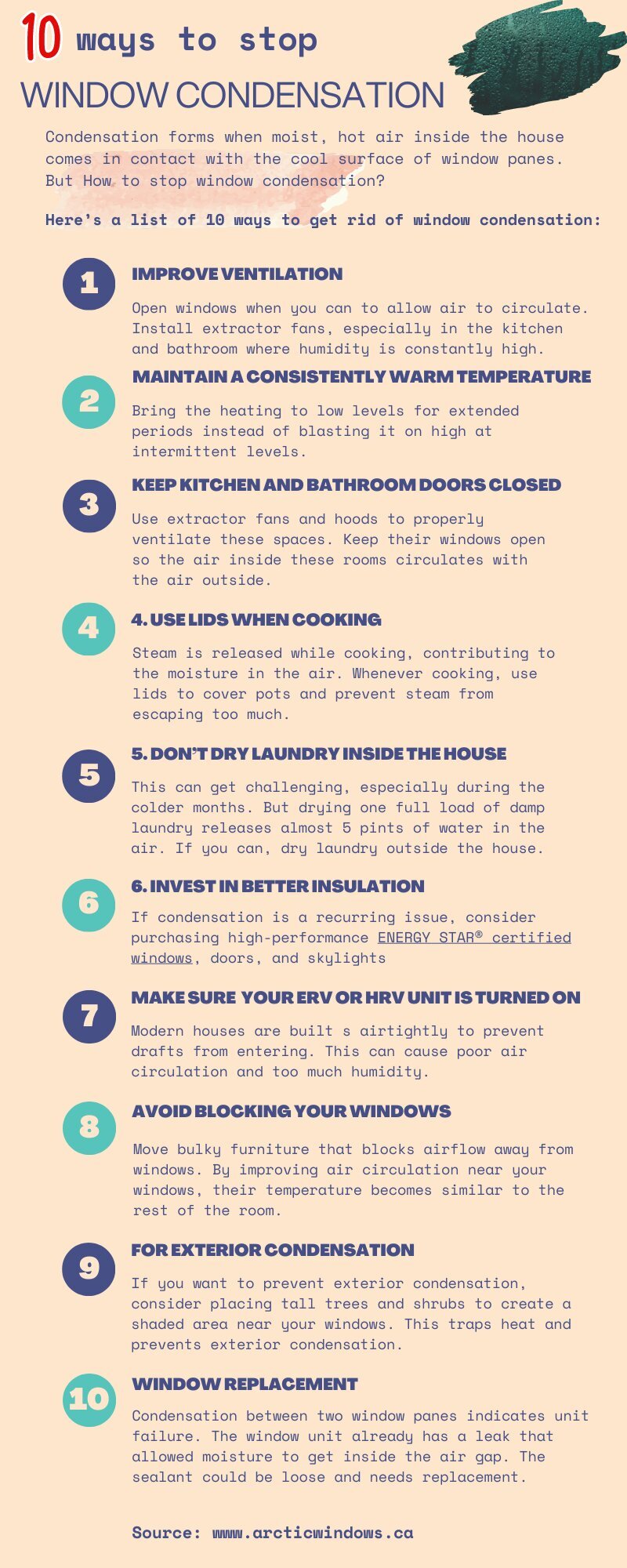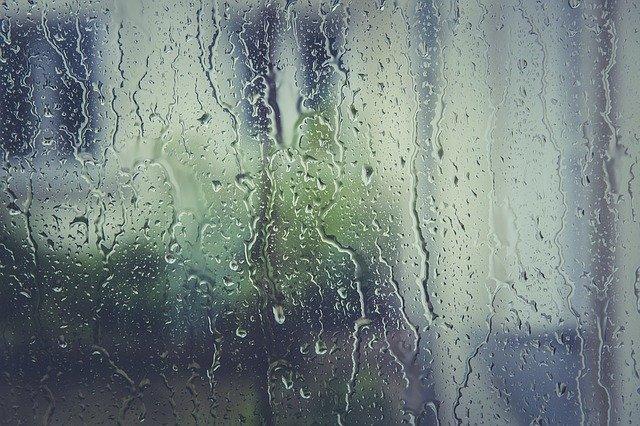10 Ways to Stop Window Condensation Overnight
Condensation on windows commonly happens, especially during winter. Condensation forms when moist, hot air inside the house comes in contact with the cool surface of window panes. During condensation, water vapor is converted to water droplets that attach to any solid object such as windows.
Condensation on windows is natural, but not doing anything about it could prove to be harmful in the long run. The good news is, it’s possible to get rid of window condensation overnight. And with proper house routines and the right windows, you can prevent condensation from becoming a huge problem.
Here’s a list of 10 ways to get rid of window condensation:
1. Improve ventilation.
2. Maintain a consistently warm temperature inside.
3. Keep kitchen and bathroom doors closed.
4. Use lids when cooking
5. Don’t dry laundry inside the house.
6. Invest in better insulation.
7. If you have an ERV or HRV unit, make sure it’s turned on.
8. Open window drapes and avoid blocking your windows.
9. In case of exterior condensation, simply wait for the sun to dry the moisture.
10. Replace your windows in case of condensation between panes.

Is Window Condensation Bad?
Most window condensation will disappear on its own as soon as temperatures rise and the moisture evaporates back in the air. However, when a room is very humid, condensation may last longer. When it’s not properly addressed, it can lead to the growth of molds and mildew, which may cause health hazards. Moreover, it shortens the window’s lifespan, making it prone to damage.
Condensation on windows is a telltale sign that your house is very humid, and it’s possible that there are other areas also suffering from it. Prolonged condensation can cause water to trickle down walls. This would create paint blisters, cracks, and warps. Over time, you’d see wall stains or even insulation or structural damage.
Condensation may seem to be a harmless side effect of too much humidity, but without proper intervention, it can cause irreversible problems.
10 Ways to Prevent Window Condensation
1. Improve ventilation.
Lack of proper ventilation creates a very humid atmosphere that encourages window condensation.
Open windows when you can to allow air to circulate. Install extractor fans, especially in the kitchen and bathroom where humidity is constantly high.
2. Maintain a consistently warm temperature inside
Temperature fluctuations can create cold surfaces for condensation to happen. By maintaining a warm temperature, even on low settings, you can ensure that surfaces remain well above the dew point so that condensation doesn’t occur.
It can be costly to keep your heater running, so it’s recommended to use a timer to switch heating on during the coldest period of the day.
Bring the heating to low levels for extended periods instead of blasting it on high at intermittent levels. An even and continuous low heat setting is better than short periods of hot air.
3. Keep kitchen and bathroom doors closed
These are the most humid areas of the house, and when you keep them open, you draw moisture from these rooms to the rest of the house.
Use extractor fans and hoods to properly ventilate these spaces. Keep their windows open so the air inside these rooms circulates with the air outside.
4. Use lids when cooking
Steam is released while cooking, contributing to the moisture in the air. Whenever cooking, use lids to cover pots and prevent steam from escaping too much.
5. Don’t dry laundry inside the house
This can get challenging, especially during the colder months. But drying one full load of damp laundry releases almost 5 pints of water in the air. If you can, dry laundry outside the house.
However, if it can’t be avoided and you must absolutely dry clothes inside, then place them beside bright and properly ventilated windows. This allows for your clothes to dry quicker.
Using a dryer also helps significantly, as long as it has proper exterior ventilation. Keep it clean to ensure that it can operate efficiently.
6. Invest in better insulation
If condensation is a recurring issue, consider reinsulating your walls and replacing your windows. Purchase high-performance ENERGY STAR® certified windows, doors, and skylights. These are energy-efficient windows with lesser condensation compared to other models.
ENERGY STAR® certified windows have triple glazing, inert gas between glass panes, thermally improved space bars, greater airtightness, insulated frames, and low-emissivity glass coatings.
Arctic Star is one of the window companies in Winnipeg that offers ENERGY STAR® certified windows and customized solutions for your window needs.
7. Turn on your ERV or HRV unit
Modern houses are built s airtightly to prevent drafts from entering. This can cause poor air circulation and too much humidity. Heat recovery ventilator (HRV) and energy recovery ventilator (ERV) are mechanical ventilation systems that control internal air humidity and improve ventilation.
8. Open window drapes and avoid blocking your windows
Closed drapes trap moisture and heat on window panes. They block air movement across glass surfaces allowing cool air to pool at the window sills. Prevent this by keeping drapes open.
Move bulky furniture that blocks airflow away from windows. By improving air circulation near your windows, their temperature becomes similar to the rest of the room.
9. In case of exterior condensation, simply wait for the sun to dry the moisture
Exterior condensation isn’t as bad as you think. They can be irritating when they block a view, but they indicate that your house is well-insulated. This usually occurs during summer when the air outside becomes warmer and more humid than the window surface.
If you want to prevent exterior condensation, consider placing tall trees and shrubs to create a shaded area near your windows. This traps heat and prevents exterior condensation.
10. Replace your windows in case of condensation between panes
Condensation between two window panes indicates unit failure. The window unit already has a leak that allowed moisture to get inside the air gap. The sealant could be loose and needs replacement.
This is a serious case because if you leave it on its own, molds will form in between the gaps leading to further damage. At this point, you can choose to repair or replace the unit.
Arctic Star offers window repair and window replacement in Winnipeg using ENERGY STAR® certified windows that qualify for the Canada Greener Home Grant. They can replace one or all window units depending on your needs.
Window condensation is not a grave threat when dealt with early. Following the tips above, you can prevent excessive condensation in your homes and enjoy better window views.
Geri Mileva
Contributing writer

